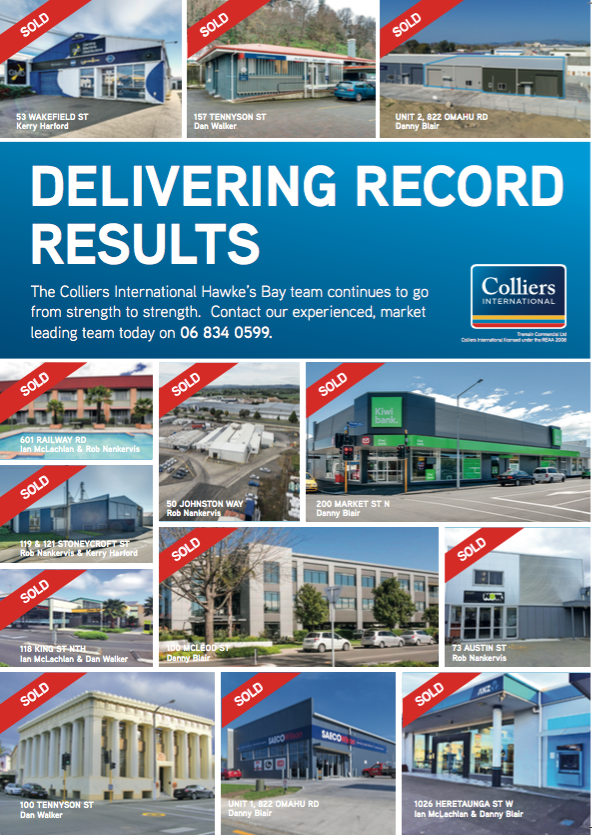Across Hawke’s Bay there’s a wave of large-scale commercial development that’s having a major impact on our economy.
It’s estimated that there is more than $600 million worth of construction projects that are either currently underway or soon to commence. We’ve tried to provide as comprehensive a list of ‘just completed, under construction and proposed large-scale projects’ to paint the picture.
The list is exhaustive and businesses within the construction sector such as Gemco Construction, Strata Group, Red Steel, Turfrey and RDCL are flat out on projects such as the $14 million-plus Hawke’s Bay Airport expansion, the $22 million-plus Hawke’s Bay Opera House & Arts Precinct, the $16 million EIT Institute of Sport and Health and the Joll Road commercial hub.
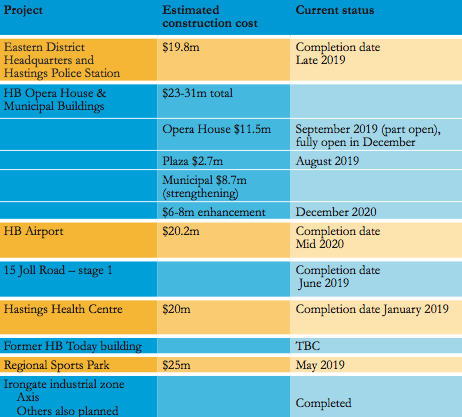
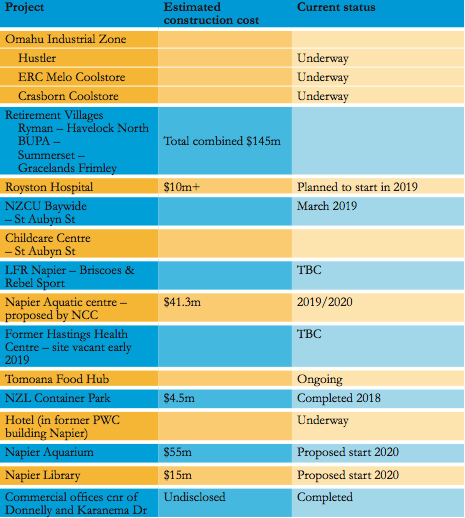
The latest commercial and industrial consent activity for Hawke’s Bay shows total floor space of 6,254 square metres with a projected value of $25 million.
This is the strongest level of development since mid-2016, with further consent applications likely over the remainder of 2018.
Project managers such as Nick Ward and Herman Wismeyer are overseeing large- scale projects with big budgets and pressure- cooker deadlines.
As well as the demand on commercial projects, residential development is also booming while the newly created industrial zones in Irongate and Omahu are attracting new businesses.
If you listen to the banks, you will hear them also talking up the Hawke’s Bay economy.
In the July quarter, ASB Bank pumped Hawke’s Bay up to a five-star rating and the third-best performing regional economy (just below Otago and Bay of Plenty).
Across at Kiwibank, they’ve given Hawke’s Bay a seven out of ten; while only Westpac has painted a gloomier picture with its June regional economic round-up saying our economy could be at a tipping point.
ANZ Bank East Coast regional manager Gavin Shing says the Hawke’s Bay economy has been buoyant for some time, supported by a lower interest rate environment, property value appreciation, tourism growth and a strong primary sector.
“Such business confidence drives investment – in fact, it is critical – and that’s readily evident across the region at present, especially in the form of property development.
“As the many construction projects indicate, business expansion initiatives, the inevitable demand for more post-harvest infrastructure and RSE worker accommodation, building renovations including a flight to workplace quality, residential property development, and the forecast demand for services infrastructure (airport, port, health centres, etc.) have all materially contributed to our region’s prosperity.”
Gavin says that with all this growth, Hawke’s Bay is fortunate to have numerous well- established and reputable construction companies.
“A lot of progress can be unwound when things go wrong and thus reinforcing the need for thorough project planning, e.g. employing qualified expertise, ensuring accurate project costings with provision for contingencies, securing sufficient pre- sales/lease contracts where applicable, and ensuring building compliance.
“Many construction companies are still looking at good project pipelines, hence together with the ongoing availability of capital and business confidence, the foreseeable future looks bright for Hawke’s Bay,” Gavin says.
Positive outlook to continue
Experienced property developer and Mackersey Construction director (now called MCL Construction) David Mackersey says there’s a lot of positivity, which a few years back he thought might last until 2018, but he now believes it will continue for at least a further two years.
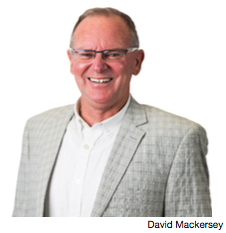
David and his business interests have been involved in many developments in Hastings, Havelock North and Napier’s Ahuriri and Onekawa, including Porters Hotel and Village Exchange in Havelock North, The Crown Hotel and Navigate Seaside Hotel complexes in Ahuriri, and the BNZ Partners and Staples Rodway facility in Hastings.
“The duration of the construction boom is unprecedented; the cycle has definitely lasted a lot longer than first expected.
“From the development side of things, most of our properties are fully leased and a number are new businesses establishing themselves in the Bay.
“There’s significant opportunities going forward. We tend to lag behind some of the other areas such as Auckland and Tauranga, so there’s still growth opportunities as we catch up.”
David points to new retirement villages planned, including one in Havelock North, as well as the large-scale residential development in the Iona/Middle roads area.
“These all turn into commercial opportunities within the village; a possible supermarket development will eventually come to fruition.
“There’s also demand for apartment living close to the village and we are considering a new development that would include offices, apartments and additional car parking in Joll Road in 2019.”
Construction book remains full
Gemco Construction recovered from the GFC in around 2012/2013 and has had year- on-year growth ever since.
The Havelock North-based business has been involved in many of the high-profile projects in the Bay such as the MTG, the Sports Park grandstand and several buildings at EIT Hawke’s Bay, and it currently has it on its books the Hawke’s Bay Opera House complex, the Hastings Health Centre and 15 Joll Road. It also recently finished the $11.8 million endoscopy building at the Hawke’s Bay Hospital.
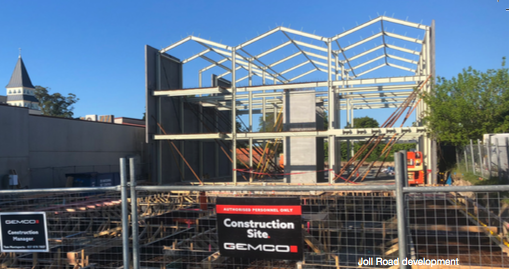
Managing director Darren Diack says there’s been five years of sustained growth and the business has at least another 12 months of work on its books.
“The book is full and the only way we could take on more work is if we had more staff, but it’s important that we manage the demand rather than over commit and then get hit by a downturn.
“History says that you get about five to seven years of growth with some peak years towards the end, and then it flattens out for three to five years, so we need to bear this in mind.”
Food Hub offer economic diversification
Hastings businessman Trevor Taylor has been the champion of a Hawke’s Bay food hub for several years.
Trevor’s business interests include Tomoana Warehousing, Tomoana Transport and Elwood Road Holdings Ltd, all based on 22.5 hectares of land in Elwood Road, Hastings.
Since 2012, he’s been promoting a food hub on this land and he’s had success in attracting water bottler NZ Miracle Water, food and beverage can manufacturer Jamestrong Packaging, a Fonterra brand distribution centre as well as a food grade storage facility, which is owned by Tomoana Warehousing.
His vision is for Hawke’s Bay to have a food innovation centre that broadens the region’s economic reliance on traditional sectors such as apple production.
“I want to see more diversification in food production, with the region not relying so much on the likes of the apple industry. The region will be better off with a wider focus on other food production activities. It is happening but it would be great to see it happen a little bit quicker.”
While Trevor is promoting a food hub on his land, the Hastings District Council is leading a Hawke’s Bay Food Innovation Centre project that has secured $215,000 from the government’s Provincial Growth Fund for a feasibility study that is being undertaken by Sapere Research Group.
The study will look at the value of an innovation hub, similar to the Waikato Innovation Park, where businesses work together to share ideas and look at how they each add value to new products that have already moved past the research level and are being commercialised.
Tomoana Food Hub is currently working on six strong leads from food processing businesses keen to relocate to Hawke’s Bay. The hub is offering long-term lease opportunities, not ownership, as its objective is to create inter-generational revenue creation with investment partner Maungaharuru-Tangitu Trust.
“There’s heightened interest at the moment with some businesses looking to consolidate facilities that are on satellite sites to one larger site and benefiting from new technology and improved productivity. There’s also greater awareness of what we can provide within a food hub with clustering and working in collaboration.”
Napier projects add to positive outlook
Napier City Council chief executive Wayne Jack says that although some economic pundits are suggesting an economic slowdown, particularly in Auckland as well as internationally, he believes there’s significant public sector investment occurring over the next few years in Hawke’s Bay to support the local economy and the flow-on impacts from that investment to help ride through any potential ‘bumps’.
He says that part of the Matariki Regional Economic Development Strategy is to have a coordinated capital works programme to provide transparency and confidence to the construction sector.
“We want to communicate to the construction sector about what’s planned over the next one, three, five and ten years across Hawke’s Bay across all government sectors, so it gives them some confidence to bring on more resources.”
Napier City Council projects alone should provide much of this confidence.
In the pipeline is a $41 million aquatic complex (expected to get underway in 2019) and a $55 million redevelopment of the National Aquarium of New Zealand, which if it goes ahead will create 291 jobs and add $23.07 million to the region’s GDP during the construction phase.
The council is also looking at a new civic and administration building as well as a future home for the Napier Library.
It is also in the final stages (as we go to print) of evaluating an RFP for a hotel to replace the current civic building, which has been closed due to earthquake risks.
These projects contribute to the council’s vision of ‘A vibrant and sustainable city for all’ and are linked to the council’s City Vision strategy that focuses on high-quality urban design and is underpinned by six guiding principles. The City Vision: Small City Big Ideas strategy won the Excellence Award for Best Creative Place category at the Local Government NZ Excellence Awards in 2017.
Already rolled out via the strategy has been the redevelopment of Marine Parade, a destination playground at Anderson Park in Taradale and a parklet in Tennyson Street.
60+ projects in Hastings pipeline
Raoul Oosterkamp, manager strategic projects and partnerships at Hastings District Council, says he’s never seen the level of construction activity in Hawke’s Bay that’s currently occurring.
He says based on industry feedback, indications are that current activity levels will continue for at least three more years. His team of five key account managers who sit within the council’s Economic Growth and Organisation Improvement Group are currently working on 60 projects of varying scale and complexity. Of these, those with a development focus equate to more than $400 million of projected investment into the district’s economy over the next 24 months.
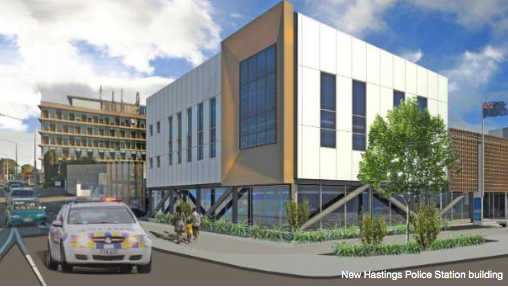
“This is just in Hastings, for the projects we are aware of. We estimate the figure across Hawke’s Bay to be in the order of $600–700 million.”
Raoul says the unprecedented growth has seen council invest into its key account service capacity, enabling it to work more effectively with business owners and developers for the benefit of the region.
“We’re taken a portfolio approach with the account managers being dedicated to either industrial developments, residential or new business opportunities via the government’s Provincial Growth Fund.
“We are wanting to offer consistent quality service and to be able to walk alongside businesses and provide timely advice and technical information as they do their due diligence so that they can make the best investment decision.”
Raoul points to the success of working with Ross Beaton in the establishment of an innovative beverage plant in Whakatu that produces cold pressed apple beverages under the brand The Apple Press as well as a range of Fonterra beverages. The $30 million-plus facility boasts market-leading technology and now employs 40 people.
“The Hastings District Council economic development team is also working on several strong (but confidential) leads for businesses keen to relocate to the region.
“Indications are that Hawke’s Bay is going to change for the better, there’s no doubt about it. The interest in our region has certainly heightened in the last 12 months.”
Returnee sees upswing in vibrancy
Hastings-based project manager Herman Wismeyer of Focus Project Management grew up in Hastings before living in Europe for 35 years. After a brief return to Hastings, he moved to Christchurch to work for Opus after the devastating 2011 earthquake.
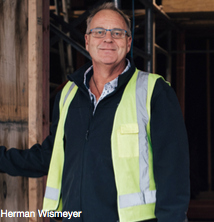
Two years ago, he was able to return to Hastings after pursuing his dream role of project managing the redevelopment of the Hawke’s Bay Opera House.
When he left for Christchurch in 2008, he says Hastings wasn’t in a good space but upon his return two years ago, there was a renewed vibe.
“There was a huge difference in the atmosphere when I returned. Hastings was a bit beaten previously but there’s been a huge turnaround.”
One of his first jobs back in Hawke’s Bay was project managing the relocation of local telecommunications company NOW into the Ahuriri tech hub. He’s now project managing the Opera House redevelopment, which will keep him busy until at least the end of 2020.
He recently turned down the earthquake strengthening job at the Rotorua Museum and hopes that Hawke’s Bay moves into a position of continued investment in new buildings.
Herman points to the current strong economy providing a platform for further investment, especially in expanding our economic footprint by attracting new business to the region.
“We’ve been in a catch-up phase with the rest of the country but we now have an opportunity to increase economic growth and attract money and new business into the region, which will in turn create new jobs and further lift the positive atmosphere.”
Health services part of new landscape
Hawke’s Bay health service developments are in great health under the project management and care of Nick Ward. A one- man-band with over 20 years’ experience, Nick has become a specialist in his field.
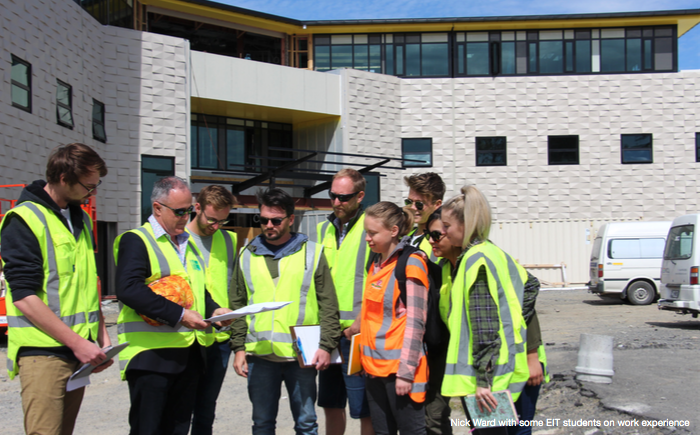
“Working on health projects is certainly very different to standard office and commercial jobs, especially when you get into clinical spaces for specialist and medical procedures,” he says.
He first entered the health development space when project managing the Wellington Zoo animal hospital design. Then 10 years ago, he project managed a primary health facility in Napier and he never left Hawke’s Bay.
Having recently completed Ruakopito, Hawke’s Bay District Health Board’s new endoscopy and gastroenterology unit, he’s now three and a half years into project managing The Hastings Health Centre’s $20 million new campus, which is set to open in March next year.
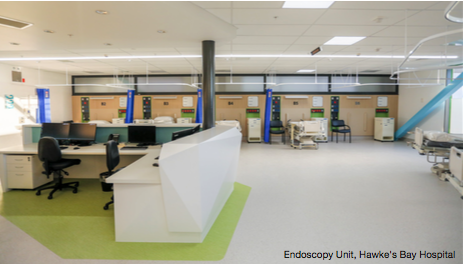
Project management is a multidisciplined role that demands strong inter-personal and communication skills, with the ability to coordinate a whole lot of people and processes and bring it all together, says Nick.
Having an independent, specialised, qualified and skilled project manager is a key and essential component right through any project lifecycle.
“In the role you need knowledge about every aspect – land development, architecture, space planning, engineering, building services, planning, costing, consenting, tendering, contract law, construction process and methodology, contract administration, materials, all sorts. You also chair a lot of meetings, manage a large group of people, write a lot of instructions and programmes while looking after budgets and all financials.”
Nick might have plenty of balls in the air but he makes time to share his knowledge and enjoys spending time with a keen group of EIT students studying architectural technology.
“It’s fantastic to see young people in Hawke’s Bay learning and keen to be part of a growing industry, which has great career opportunities and future job prospects.”
Investor confidence at a high
As well as buildings being built, there’s also been plenty of sales action on the commercial property sales scene.
Colliers International broker Danny Blair recently sold a multi-tenanted property at 100 McLeod Street, Hastings, which is anchored by the Hawke’s Bay District Health Board, for $10.4 million.
Another recent large property transaction was a portfolio of four big box premises at The Park Mega Centre sold for $21 million.
Danny says the price and yield achieved for the McLeod Street building is testament to the desirability of Hawke’s Bay commercial real estate.
That assessment is backed up by the latest Colliers International confidence survey, which found more investors are optimistic about the region’s market performance than in almost a decade.
A net positive 16 percent of respondents expect conditions in the Hawke’s Bay commercial property sector to improve over the next 12 months – the second-highest result since the survey began in 2008.
“Investor confidence has clearly been building in Hawke’s Bay’s commercial property sector. In the first quarter of 2018, sales activity was the strongest in almost two years.”
Recent CoreLogic sales data analysed by Colliers shows total commercial property sales in the first quarter of 2018 reached just over $47 million. That is likely to increase to $55 million once reporting data catches up.
The industrial sector accounted for most of the transactions but bolstering overall sales activity this year has been solid turnover in the office, retail and commercial mixed-use sectors.
Non-industrial commercial property transactions accounted for 41 percent of the commercial sales value and 46 percent of total sales activity so far this year.
Would you like your project profiled in upcoming issues? Contact Damon on damon@attn.co.nz


